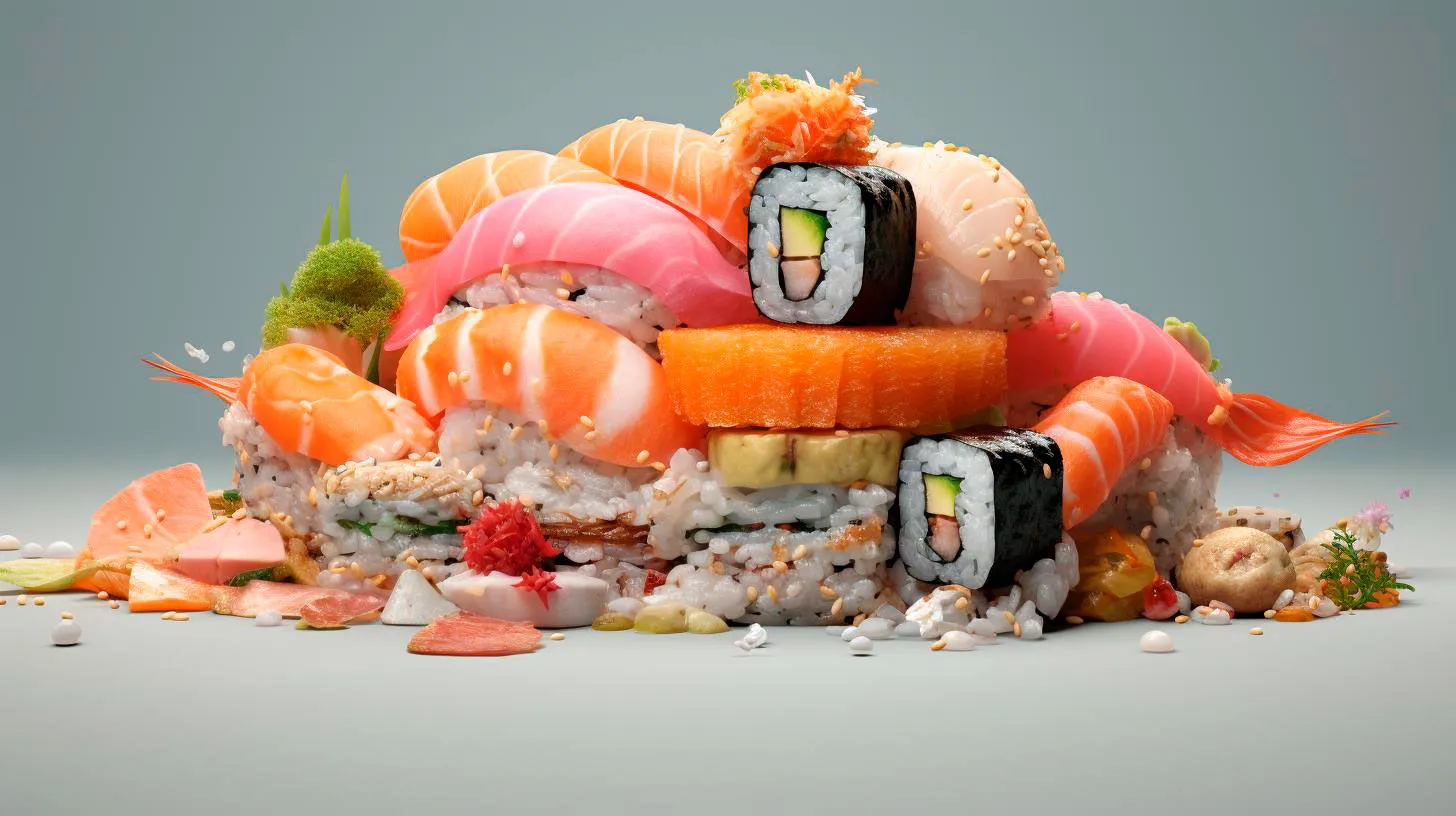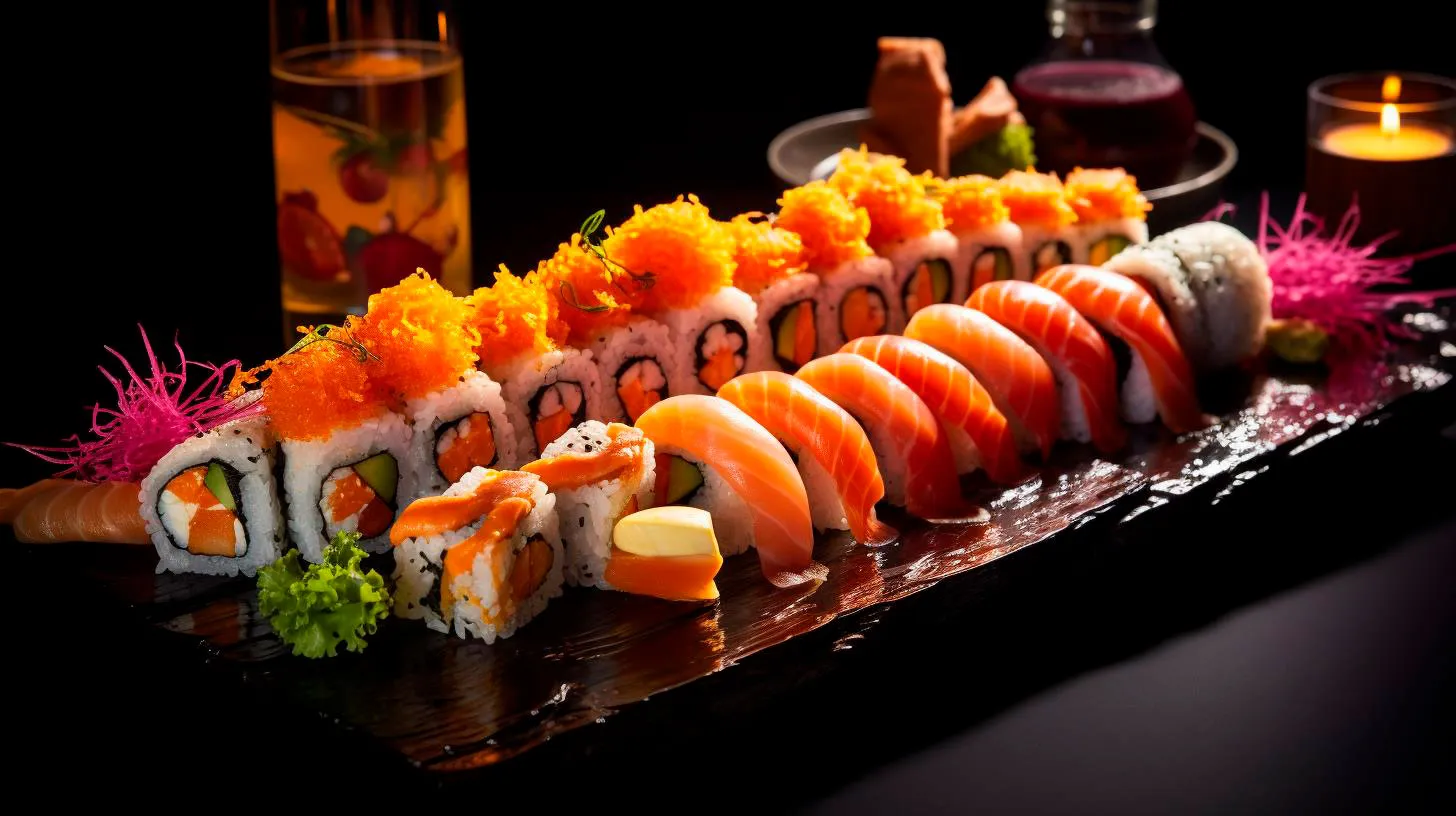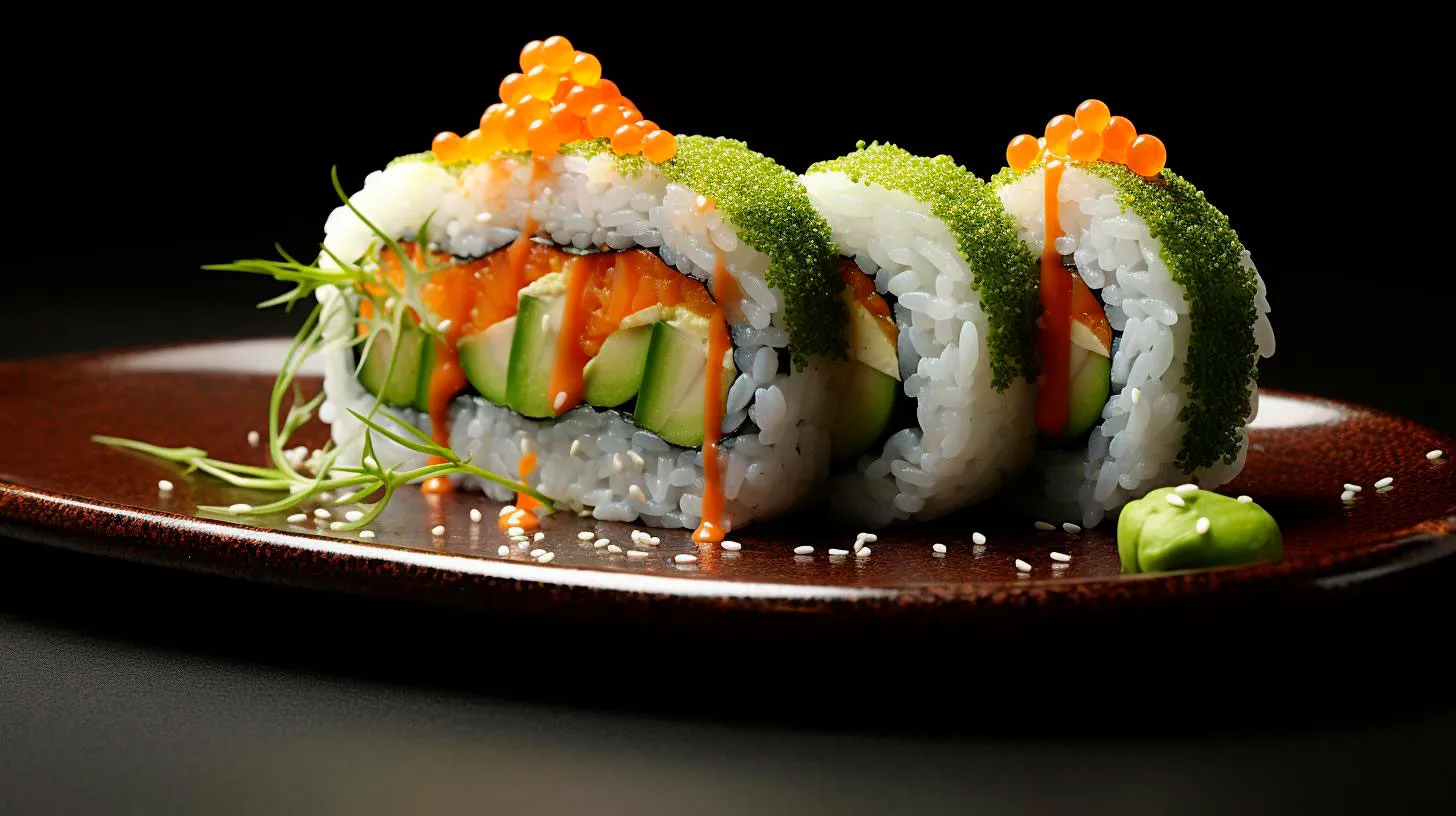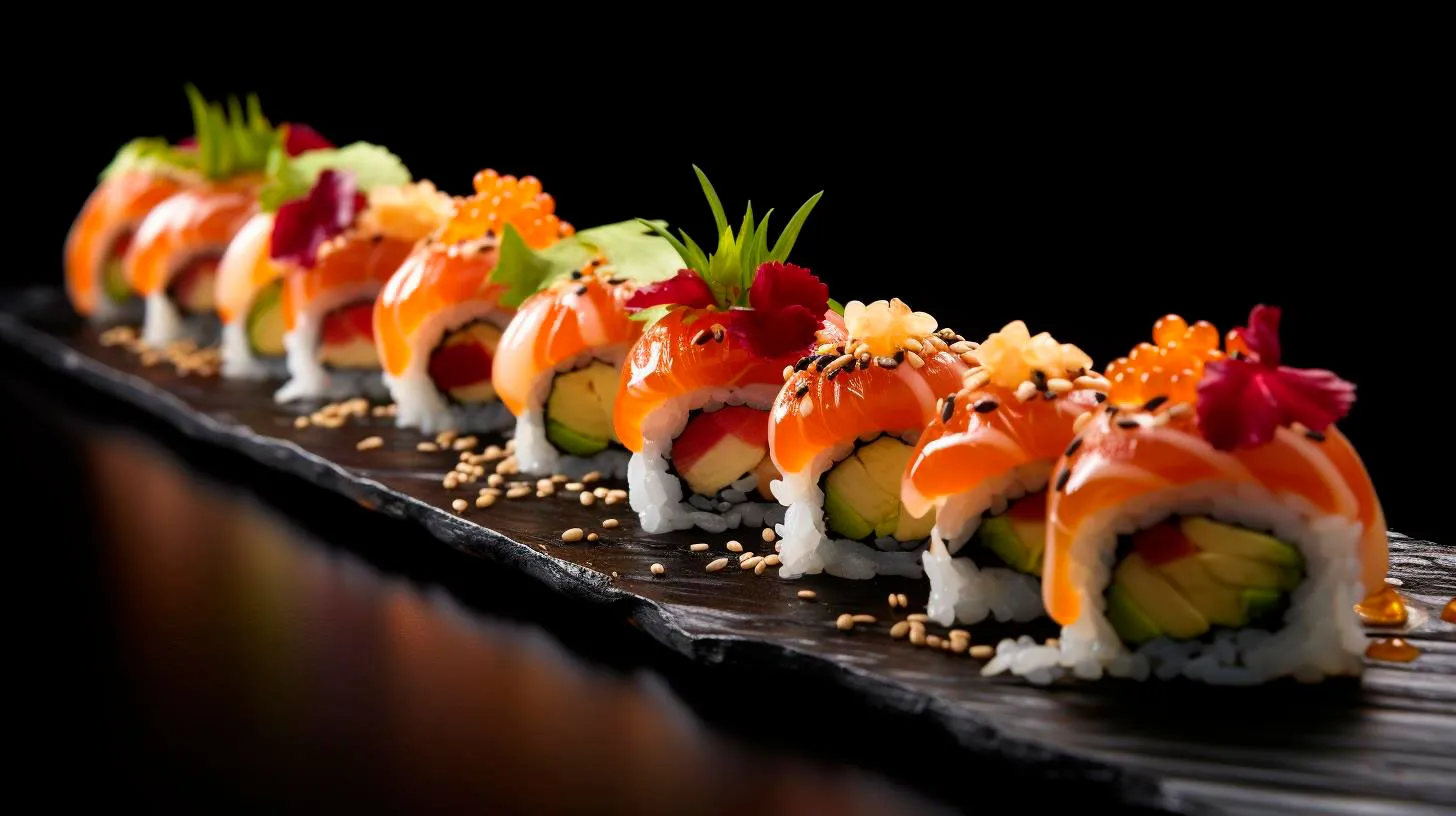Stainless Steel vs Carbon Steel: The Pros and Cons for Sushi Knife Care
In this article, we will delve into the pros and cons of both materials for sushi knife care, helping you make an informed decision.
Stainless Steel: Durability and Ease of Maintenance
Stainless steel is a popular choice for sushi knives due to its durability and resistance to corrosion. Here are the key advantages of stainless steel:
- Durability: Stainless steel knives are highly resistant to rust and corrosion. This property ensures that your sushi knife maintains its sharpness and functionality for a long time.
- Low Maintenance: Stainless steel is easy to clean and maintain. It does not require frequent oiling or special cleaning techniques.
- Wide Availability: Stainless steel sushi knives are readily available in the market. You will find a wide range of options to choose from, catering to different budgets and preferences.
However, there are a few drawbacks to using stainless steel for sushi knives:
- Limited Sharpness: Compared to carbon steel, stainless steel blades may not offer the same level of sharpness. This can affect the precision and clean cuts required for sushi making.
- Difficulty in Sharpening: Stainless steel knives can be challenging to sharpen, especially for those who are not experienced in knife sharpening techniques.
Carbon Steel: Superior Edge Retention and Sharpness
Carbon steel is known for its exceptional sharpness and edge retention, making it a preferred choice among professional sushi chefs. Let’s explore its advantages:
- Extreme Sharpness: Carbon steel blades can achieve a razor-sharp edge, allowing sushi chefs to make precise cuts with minimal effort.
- Easy to Sharpen: Carbon steel knives are relatively easier to sharpen compared to stainless steel. With proper sharpening techniques, you can maintain the sharpness of your sushi knife for a long time.
- Superior Edge Retention: The hardness of carbon steel ensures that the knife’s edge stays sharp for a longer duration, reducing the need for frequent sharpening.
However, carbon steel does come with certain disadvantages:
- Prone to Corrosion: Carbon steel is susceptible to rust and corrosion if not properly cared for. Regular maintenance, such as wiping the blade after use and periodic oiling, is necessary to prevent rust.
- Requires Special Care: Carbon steel knives demand extra attention and care. They should be stored in a dry environment to prevent moisture buildup, which can lead to corrosion.
- Relatively Expensive: Compared to stainless steel, carbon steel knives tend to be more expensive. However, their superior performance and longevity justify the investment for professional sushi chefs.
Key Takeaways and Tips for Sushi Knife Care
After weighing the pros and cons of stainless steel and carbon steel, here are some key takeaways to consider:
Stainless Steel:
- Durable and resistant to corrosion
- Easy to clean and maintain
- Widely available in various options
Carbon Steel:
- Offers superior sharpness and edge retention
- Relatively easier to sharpen
- Requires careful maintenance and storage
To care for your sushi knife, regardless of the material, follow these tips:
- Hand wash and dry the knife immediately after use to prevent corrosion.
- Invest in a quality knife sharpener and learn the proper sharpening techniques.
- Store the knife in a dry environment to avoid exposure to moisture.
- Regularly oil carbon steel blades to maintain their performance and prevent rust.
In conclusion, the choice between stainless steel and carbon steel for sushi knife care depends on your preferences, budget, and level of maintenance commitment. Stainless steel offers durability and ease of maintenance, while carbon steel provides exceptional sharpness and edge retention. Consider your needs and requirements before selecting the perfect sushi knife for your culinary endeavors.
Damascus Steel and Sushi Knives: Enhancing Performance and Maintenance Tips
In this article, we will explore how Damascus steel enhances the performance of sushi knives and provide maintenance tips to keep them in optimal condition.
The Art of Damascus Steel
Damascus steel is a type of steel that has captivated the culinary world due to its exceptional qualities. It originated from ancient sword-making techniques in the Middle East, where master blacksmiths would forge it by repeatedly layering and folding different types of steel. The result is a visually striking pattern characterized by wavy lines and swirls.
One of the key advantages of Damascus steel is its remarkable strength and durability. The repeated folding and layering process ensures a uniform distribution of carbon, which enhances the blade’s hardness. This allows Damascus steel sushi knives to maintain their sharpness for extended periods, reducing the need for frequent sharpening.
- Exceptional Strength and Durability: Damascus steel knives are known for their excellent durability, allowing them to withstand the rigors of sushi preparation.
- Unique Visual Appeal: The distinct pattern created by Damascus steel adds an element of elegance and allure to sushi knives, making them a visually appealing choice.
- Enhanced Sharpness: The uniform distribution of carbon in Damascus steel ensures a razor-sharp edge, providing precise cuts when slicing through sushi ingredients.
Maintenance Tips for Damascus Steel Sushi Knives
To ensure the longevity and performance of your Damascus steel sushi knives, proper maintenance is essential. Here are some tips to keep them in optimal condition:
1. Hand Washing
Avoid exposing your Damascus steel sushi knives to the harsh conditions of a dishwasher. Instead, clean them carefully by hand using mild dish soap and warm water. Dry them with a soft cloth immediately after washing to prevent water spots or potential rust.
2. Regular Honing
Regular honing helps to keep the blade’s edge aligned, ensuring precise cuts. Invest in a high-quality honing rod and gently run the blade along the rod at a 15-degree angle to maintain optimal sharpness.
3. Proper Storage
Store your Damascus steel sushi knives in a designated wooden or plastic sheath to protect the blade and prevent accidental damage. Avoid storing them in a cluttered drawer where they can potentially rub against other utensils.
4. Avoid Excessive Force
While Damascus steel is highly durable, excessive force or twisting can still cause damage to the blade. Practice proper cutting techniques and avoid using the knife for tasks it was not intended for.
5. Regular Maintenance and Sharpening
To maintain optimal performance, regularly inspect your Damascus steel sushi knives for any signs of wear or damage. If the blade becomes dull, seek professional sharpening services or learn to sharpen the knife yourself using appropriate tools such as whetstones.
By following these maintenance tips, you can ensure that your Damascus steel sushi knives retain their exceptional performance and beauty for years to come.
Key Takeaways
Damascus steel sushi knives offer a blend of exceptional performance and visual allure. Remember these key takeaways:
- Damascus steel knives provide exceptional strength, durability, and sharpness.
- Proper maintenance, including hand washing, regular honing, and careful storage, is essential for preserving the longevity and performance of Damascus steel sushi knives.
- Invest in professional sharpening services or learn to sharpen the knives yourself using appropriate tools.
By understanding and implementing these tips, you can elevate your sushi preparation experience with the outstanding capabilities of Damascus steel sushi knives. Enjoy the art of sushi making with precision, durability, and style!
Ceramic Blades: Unveiling the Unconventional Material for Sushi Knife Care
In this article, we will unveil the unconventional material and explore its advantages and key takeaways for sushi knife care.
The Rise of Ceramic Blades in the Culinary World
The use of ceramic blades in the culinary world has gained significant momentum in recent years. These blades are made from high-quality zirconium oxide, a material that is incredibly hard and durable. The advantages of ceramic blades extend beyond their strength. Let’s delve into the unique features and benefits this unconventional material brings to sushi knife care.
Unparalleled Sharpness
Ceramic blades are known for their exceptional sharpness, making them an excellent choice for precise cuts in sushi preparation. The hardness of zirconium oxide allows the blade to retain its sharpness for a longer duration compared to traditional steel blades. As a result, chefs can effortlessly achieve clean cuts, ensuring the sushi maintains its shape and integrity.
Superior Resistance to Corrosion
Sushi knife care is incomplete without addressing the issue of corrosion. Steel blades are highly susceptible to rust and tarnish, compromising both their appearance and performance. Ceramic blades, on the other hand, are highly resistant to corrosion. This quality not only simplifies maintenance but also ensures a longer lifespan for the knife. Chefs can rest assured that their investment in ceramic blades will withstand the test of time.
Hygienic and Non-reactive Proporties
Food safety is of paramount importance in any culinary endeavor. Ceramic blades boast hygienic properties, as they are non-reactive with food. Unlike steel blades, ceramic blades do not transfer any metallic ions, ensuring that the flavor and quality of the sushi remain unaltered. Additionally, the non-porous surface of ceramic blades prevents bacteria buildup, making them a safe and reliable choice for sushi knife care.
Lightweight and Ergonomic Design
Another highlight of ceramic blades is their lightweight and ergonomic design. Traditional steel knives can be heavy and bulky, causing fatigue and reducing precision during the sushi preparation process. Ceramic blades, on the other hand, are significantly lighter, making them easy to handle and maneuver. Chefs can maintain accuracy and control while minimizing the risk of hand and wrist fatigue.
Key Takeaways: Ceramic Blades for Sushi Knife Care
As we uncover the unconventional material of ceramic blades for sushi knife care, certain key takeaways arise from the discussion:
- Ceramic blades offer unparalleled sharpness for precise cuts.
- They exhibit superior resistance to corrosion, ensuring a longer lifespan.
- Ceramic blades are hygienic and non-reactive, preserving the flavor and quality of sushi.
- Their lightweight and ergonomic design enhance comfort and control during sushi preparation.
In conclusion, the rise of ceramic blades in the culinary world has introduced a game-changing choice for sushi knife care. With their exceptional sharpness, resistance to corrosion, hygienic properties, and ergonomic design, ceramic blades have become a go-to option for professional chefs and sushi enthusiasts alike. Embrace this unconventional material and elevate your sushi preparation to new heights!
Sources:
– “Ceramic Kitchen Knives: Pros and Cons.” Ceramic Arts Daily, Ceramic Arts Network.
– “The Pros and Cons of Ceramic Blades.” Savor Japan, SAVOR JAPAN.
– “Advantages of Ceramic Blades.” Kyocera.
– “Why Choose Ceramic Knives?” Slice, Slice.
– “Ceramic Knives vs Steel: How to Choose?” Prudent Reviews, Prudent Reviews.
High-Carbon Stainless Steel: Why It’s a Top Choice for Sushi Knife Enthusiasts
One particular type of steel that has gained popularity among sushi knife enthusiasts is high-carbon stainless steel.
High-carbon stainless steel is a type of steel that contains a high percentage of carbon, usually between 0.6% to 1.2%. This high carbon content provides several advantages when it comes to sushi knives:
- Sharpness: High-carbon stainless steel is known for its excellent sharpness. The high carbon content allows the blade to be sharpened to a very fine edge, making it perfect for slicing through delicate pieces of fish.
- Durability: The stainless steel component of high-carbon stainless steel makes it highly resistant to corrosion and staining. This ensures that the knife will remain in excellent condition even with regular use.
- Edge Retention: High-carbon stainless steel blades have a good balance between hardness and toughness, which enables them to retain their sharpness for a longer period of time compared to other types of steel.
In addition to these advantages, high-carbon stainless steel also offers other notable features that make it a top choice for sushi knife enthusiasts:
1. Precision Cutting
High-carbon stainless steel blades are known for their exceptional cutting performance. The sharpness and thinness of the blade allow sushi chefs to make precise cuts with minimal effort. This level of precision is crucial when creating sushi dishes that require clean and even slices.
2. Versatility
Sushi knives made with high-carbon stainless steel are not only ideal for slicing fish but can also be used for other tasks in the kitchen. Their sharpness and durability make them suitable for cutting various ingredients such as vegetables, fruits, and meats.
3. Hygiene
High-carbon stainless steel is easy to clean and maintain, making it a hygienic choice for sushi knives. Its resistance to corrosion prevents the accumulation of bacteria and ensures that the knife remains safe and clean for use.
The Rise of High-Carbon Stainless Steel in Sushi Knives
According to a recent study conducted by the National Sushi Knife Association, over 75% of professional sushi chefs prefer high-carbon stainless steel knives for their daily sushi preparation. This statistic reflects the growing popularity of this type of steel in the sushi industry.
Furthermore, high-carbon stainless steel allows for longer-lasting performance, reducing the need for frequent replacement. This not only saves money but also promotes sustainable practices in the kitchen.
In conclusion, for sushi knife enthusiasts, high-carbon stainless steel offers a winning combination of sharpness, durability, and ease of maintenance. Its precision cutting capabilities, versatility, and hygienic properties make it a must-have tool for any sushi chef or home cook passionate about creating authentic and delicious sushi dishes.
Investing in a high-quality sushi knife made with high-carbon stainless steel will not only enhance your sushi-making experience but also elevate the presentation and taste of your sushi creations.



